David Suzuki's Blog, page 37
May 18, 2016
An Open Letter to the Premier of B.C. and the Metro Vancouver Mayors' Council
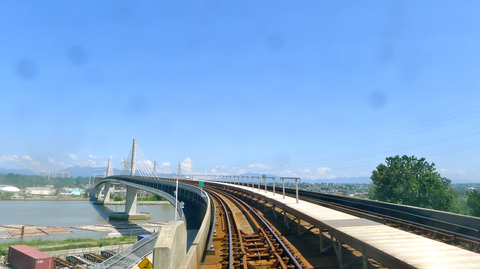
(Credit: Martin Deutsch via Flickr)
The following letter was delivered to the Premier of British Columbia and the Metro Vancouver Mayors' Council on May 18, 2016 on behalf of the David Suzuki Foundation and 30 other stakeholders from around Metro Vancouver:
The Hon. Christy Clark
Premier of British Columbia
Office of the Premier
Metro Vancouver Mayors' Council
Cc: Hon. Todd Stone; Hon. Peter Fassbender
Re: A call for leadership to invest in transit and transportation in Metro Vancouver
Dear Premier Clark and Members of the Mayors' Council,
We the undersigned are a diverse group of organizations from business, labour, health, environment and student associations working together to advocate for investment in Metro Vancouver's transportation system.
We are writing to urge you to act quickly and take advantage of the opportunity afforded by the recent federal budget to improve transit and transportation in our region. As you know, in its budget, the federal government made a commitment to a $370 million "down payment" toward the 10-year Metro Vancouver Transit and Transportation Plan. The federal government has also shown tremendous leadership by agreeing to pay 50 per cent of all capital transit costs provided agreements can be struck with the province and local mayors.
These commitments have changed the landscape for transit funding in our region, but with this opportunity comes a challenge: we need to be ready with regional and provincial funding, or else these federal dollars, collected from local taxpayers, will go to other cities and provinces that are ready. For the good of our economy and the health and livelihood of citizens, this cannot happen. We are calling on the province and the Mayors' Council to work together to ensure that we are ready to get Metro Vancouver moving again.
Expansion of transit services -- especially when they're electrified -- is crucial for Metro Vancouver to improve air quality and health, reduce greenhouse gas emissions and promote economic development and job growth.
A growing number of studies confirm that congestion costs our region more than $1 billion each year due to lost productivity, increased operating costs and lost business revenue and regional GDP. It has been estimated that investment in transit could save the health care system at least $115 million annually, and likely considerably more if the benefits of increased physical activity were also included as part of the cost-savings analysis.
We ask you show leadership by putting history and political differences aside to work together and ensure we are ready to take full advantage of federal support and start improving transit and transportation. Adding new federal dollars is an essential prerequisite for moving ahead with stalled transit improvements so badly needed for the Metro Vancouver region, and for B.C. as a whole.
Lastly, we wanted to take this opportunity to highlight the importance of using newly available federal funds to implement the full set of regional transportation improvements outlined in the Mayors' Council Transportation and Transit Plan rather than a few projects here and there. A regional approach to transportation investments will ensure that Metro Vancouver residents and businesses throughout the region will benefit. Local and provincial governments have the power to help us make history in B.C. and Metro Vancouver through implementation of a world-class provincial and regional transportation plan.
Should you require more information, we would be happy to meet with you or your staff.
Thank you for considering this request.
AMS Student Society of UBC Vancouver
BC Federation of Labour
BC Healthy Living Alliance
BC Teachers' Federation
Better Environmentally Sound Transportation
British Columbia Golf
Canadian Centre for Policy Alternatives
Clean Energy BC
Clean Energy Canada
Connecting Environmental Professionals - Vancouver Chapter
The David Suzuki Foundation
Dialog Design
Disability Alliance BC
Downtown Surrey Business Improvement Association
Downtown Vancouver Association
Downtown Vancouver Business Improvement Association
Dr. Lisa J. Jing Mu, Medical Health Officer, Fraser Region
ForestEthics
Gordon Price, Director of the SFU City Program
Graduate Student Society at SFU
Greenpeace Canada
HandyDART Riders Alliance
HASTe BC
Heart and Stroke Foundation
HUB Cycling
Novex Delivery Solutions
Offsetters
Perkins+Will Architects
Public Health Association of BC
Renewal Funds Company
Society Promoting Environmental Conservation
Transport Action - British Columbia
Vanterre Projects Corp
Victoria Lee MD MPH MBA CCFP FRCPC, Chief Medical Health Officer, Fraser Health Authority
Hey! Want more DSF? Join David Suzuki on Facebook

May 17, 2016
LNG project could blow Canada's climate commitments

LNG tanker (Credit: Amanda Graham via Flickr)
Canadians were proud of our country's leadership during the December climate talks in Paris, especially for advocating that nations try to limit warming to 1.5 C.
Hey! Want more DSF? Join David Suzuki on Facebook

May 12, 2016
Ain't nothing like the real thing -- but virtual reality comes close
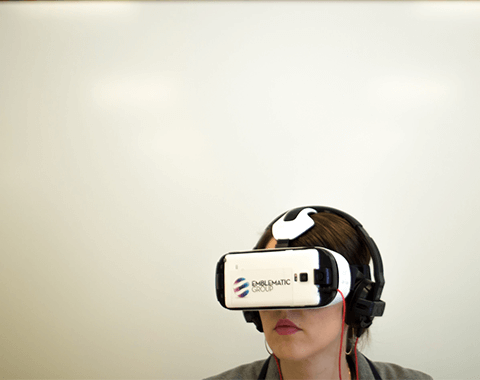
(Credit: Knight Center for Journalism in the Americas, University of Texas at Austin via Flickr)
The digital revolution is breaking new ground every day. Technology has a way of doing that. I remember when Hewlett-Packard introduced its first "laptop" computer, which stored a page and a half of writing. It revolutionized my life as a newspaper columnist, allowing me to write on planes or in a tent and submit articles through a phone. I never imagined the steady advances that would lead to today's powerful laptops, tablets and handheld computers.
Once while filming in a remote B.C. forest, I wanted to pan from the roots of a cedar tree along the trunk to the top in a single shot. After spending hours rigging wires and pulleys and struggling to keep the heavy camera from swaying as it rose, our crew gave up in frustration. Recently, we used a light GoPro camera mounted under a drone to get a spectacular high-definition shot in a few minutes!
The first time I opened YouTube, I was looking for a video of the astounding phenomenon of mucous secretion by a hagfish, a primitive marine animal. To my surprise, I found several postings, and as I chose one, a list of several others that might be of interest popped up. Two hours later, I realized I'd been sucked in by an incredible range of films.
When I first heard about virtual reality, I was invited to put on the goggles and experience it. Crude as those first images were compared to what's available now, I was immersed in the scenes. It was impressive and exciting, but I suggested that people should be wary of unintended consequences, because virtual reality could eventually appear better than reality.
With virtual reality, people could race a car and experience all the heart-thumping adrenalin of the real thing, then crash and walk away unharmed. We could have a showdown with a gunslinger, lose and fight again. We could indulge in the kinkiest sex without exposure to sexually transmitted infection or other consequences. Why go for the real experience when a virtual one would be risk-free?
During a recent visit to Montreal, I had the opportunity to watch the latest iteration of the digital revolution: images in 3D, HD and 360o wrap-around. It was mindboggling. I swam with whales and zoomed through a forest, listening to actual sounds, along with music and narration. As I watched a spectacular mountain forest, a train suddenly appeared, splashing across a lake and then coming straight at me. As my body responded to the all-too-realistic locomotive, it reached me and exploded into a thousand birds that took off in a glorious cloud. Computer graphics melded seamlessly with actual footage that generated scenes far exceeding reality.
I've been intrigued by the possibility that this technology could enable people to have such incredible experiences with whales, fish and other animals that we would no longer feel the need to imprison animals in aquaria and zoos. People wouldn't even need to journey to exotic places to see wildlife in their habitats.
I have no doubt virtual reality is going to have a huge impact. We're just beginning to recognize its potential. But as with all new technology, there will be unintended repercussions, the greatest of which will be further estrangement from nature. Studies show that because people evolved out of nature, we need that connection with the natural world for mental and physical well-being.
Author Richard Louv categorizes a suite of childhood problems -- including bullying, attention deficit disorder and hyperactivity -- as "nature deficit disorder", induced or worsened by too little physical exposure to nature. The average Canadian kid today spends more than six hours a day glued to a screen -- mobile phones, computers, televisions -- and less than eight minutes a day outside! That's one reason why the David Suzuki Foundation is encouraging people to get outside for 30 minutes a day in May with its 30×30 Nature Challenge.
Some proponents claim virtual reality will stimulate children to spend more time outside. But why bother when the virtual world seems better than the real one? I'm sure innovation and creativity will continue to drive the technology to new frontiers. I'm just as sure there will be enormous unexpected and damaging consequences if we aren't careful.
Hey! Want more DSF? Join David Suzuki on Facebook

May 10, 2016
How to make dish soap

Add soap nuts to a jar of water and shake to make eco-friendly dish soap! (Credit: Lindsay Coulter)
A DIY dish soap recipe that really works was impossible to find...until now!
(Like me, many of you probably tried to use liquid castile soap or boil up soap granules without success.)
Queen of Green liquid dish soap recipe
Ingredients:
One handful soap nuts (a.k.a. soapberries)
1 L (4 cups) tap water
Directions:
Add ingredients to a glass jar with a tight lid. Shake the jar before each use. When you get bubbles, pour about 125 ml (½ cup) of the solution into your sink. Refill the jar with water. Use this solution until the soap nuts stop making suds or smell bad. Then throw them in the compost and start a new batch.
Personalize this recipe by altering ingredient ratios for desired results -- success will depend on the hardness of your water and dish grime. You can even add the solution to a pump soap dispenser.
How do soap nuts work?
Soap nut shells contain large amounts of natural surfactants called saponins. Surfactants lower a liquid's surface tension and so can be used as detergents or foaming agents. You can find soap nuts in many health food stores and organic grocers or online.
I know soap nuts aren't local. But they have other eco-friendly qualities: They're biodegradable, certified organic, free of scents, plastic and toxics, and many companies ensure local producers (e.g., in India) are paid fair wages.
Have you found a great use for soap nuts?
Sincerely,
Lindsay Coulter, a fellow Queen of Green
Hey! Want more DSF? Join David Suzuki on Facebook

May 9, 2016
Mindfulness in nature: dysbiosis, bathing in biodiversity and making the most of 30x30
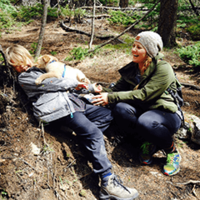
Photo credit: Mandy from North Battleford, SK
Our first meeting was on a bus in Tokyo, Japan, in 2003. We began talking about the influence of mindfulness and natural environments on human health. Microbes are an unseen part of nature, and an essential part of the biodiversity that sustains life. Thus, we wondered about the relationship between biophilia and the hygiene hypothesis.
Biologist Edward O. Wilson proposed biophilia as rich, natural pleasure derived from being surrounded by living organisms, including a diversity of plants and animals. The focus was on visible forms of life. The hygiene hypothesis (and its variants) suggests global elevations in non-communicable diseases could be related to diminished early-life opportunity exposure to a diversity of microbes via sanitization and modernity.
Dysbiosis means life in distress/difficult living. It can describe unhealthy shifts in microbes residing on the skin, in the gut or other locations. Dysbiosis in the microbial sense is environmentally driven. We wondered if humans might actually subconsciously receive natural pleasure -- via immune responses -- with help from diverse groups of microorganisms encountered in natural environments.
We had reason for such outlandish thoughts. Independently, our respective research had examined the hygiene hypothesis, explaining the protective potential of microbes in early life, and provided a contemporary framework for microbial influences on fatigue, cognition and depression. Microbes encountered in nature have been directly and indirectly influencing the immune system of our genus for nearly three million years.
We also discussed shinrin-yoku (Japanese term for forest bathing, or taking in the forest air). Throughout the 1990s, Japanese researchers examined forest-based exercise in patients with diabetes. They also reported improved mood and lower stress hormone production when healthy adults walked in forests as opposed to indoor treadmills.
Shinrin-yoku places emphasis on breathing -- the intake of airborne aromatic chemicals and other unseen elements emitted from trees and forest floors. It involves mindfulness, present-moment awareness and "absorbing" nature through all senses. There was much to encounter beyond the visual while walking in woodland.
Mindfulness involves orientation to experience. That is, being oriented to the present moment with curiosity, openness and acceptance. Examples include listening to the sounds of birds or ripples of water, examining details in leaves, feeling tree-bark texture, letting soil aromas hit the nasal passages...as if it were the first time.
What were we breathing in as we walked in nature? How does air within vegetation-rich areas differ from air in a built environment? Is built-environment air simply filled with human-generated particulate matter, or is it absent of therapeutic substances secreted from trees? Were inhaled microbes different, too? What about personal orientation to nature? Recently we have explored these questions.
More than a dozen years on from our bus ride, scientists have published volumes of research on natural environments and biodiversity for human health. Research on shinrin-yoku has shifted to more accessible urban and semi-urban forests. Scientists report lowered stress hormones, decreased markers of inflammation, improved immune functioning and positive mental outlook after walks in green space compared to built environments.
Mindfulness can bridge the gap between the inherent value of natural environments and maximizing potential for individual well-being. Personal nature relatedness -- an individual's fascination with and desire for nature contact -- is associated with mental well-being. Mindfulness and the ability to perceive and engage with natural beauty are linked to nature relatedness.
Microbes in the air and soils of natural environments can be unique. Microbial differences on the skin of those living in close proximity to more diverse vegetation may directly influence immune function throughout the body and may even influence mood. Indirectly, microbes help manufacture the airborne phytonides -- natural chemicals secreted from trees -- that are linked to healthy immune functioning.
Researchers continue to uncover the mechanisms behind the therapeutic value of nature and the products of biodiversity. Benefits are not exclusive to remote wilderness. Local nature and backyard biodiversity are often within easy reach, and they can provide ample benefit. We have much to learn, and in the meantime, the outdoors beckons.
The David Suzuki Foundation is once again challenging Canadians to get outside into nature for 30 minutes daily during May. The benefits of engagement are many. Elizabeth Nisbet, co-developer of the Nature Relatedness Scale, has found that 30×30 participants double their usual time in contact with nature, and experience reduced stress and improvement in mood and vitality.
Participants of 30×30 experience greater connectedness to nature, which links to improvements in personal well-being. A British study involving a 30-day engagement with nature program reports similar findings. Engagement brings sustained increases in happiness, health, connection to nature and pro-environmental behaviours.
The results demonstrate that 30×30 is a win-win-win for personal, community and planetary health. Connecting with local biodiversity illuminates the connectivity of all life, and the importance of equitable access to nature as a fundamental right. Consideration of mindfulness during 30×30 might provide an "extra strength" dose of personal vitality.
Susan Prescott is a professor in the School of Paediatrics and Child Health Research at the University of Western Australia. She has published over 250 peer-reviewed articles, and several books, including Origins: Early-life Solutions to the Modern Health Crisis (UWA Publishing, 2015). Alan Logan is an independent researcher, contributor to Harvard School of Public Health's Natural Environments Initiative and co-author of Your Brain on Nature (Harper, 2012).
Hey! Want more DSF? Join David Suzuki on Facebook

Fort McMurray wildfires
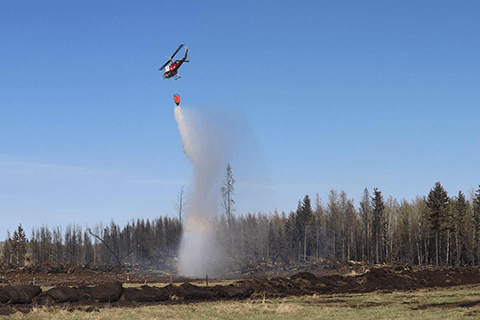
Photo: Government of Alberta — Alberta Wildfire Info
Like many Canadians, we at the David Suzuki Foundation are following the wildfires in the Fort McMurray area with deep concern and sympathy for those who live there. It has been tragic and terrifying for the people of Fort McMurray, many of whom had to flee quickly, leaving all they've worked for to the consuming inferno.
Coming on the heels of an already difficult downturn in the oil industry, the wildfires were an especially cruel blow. It's a testament to the courage, kindness and community spirit of the people of the area -- and the firefighters and rescue workers, along with local First Nations that stepped up to offer shelter -- that the evacuation has been carried out quickly and carefully.
During the first week of May, wildfires also raged through Saskatchewan, B.C. and New Brunswick, with Manitoba on high alert. Fires were also burning in Minnesota, northern India, Nepal and elsewhere. Fires in the boreal forest are not unusual. But temperatures as high as 33 C this early in the year are. The average early May high temperature in Fort McMurray is 16 C. Alberta had twice as many fires last year as its 25-year average, and fire seasons there and throughout many parts of the world are getting longer every year, with fires consuming greater areas.
Along with dry conditions from a lack of precipitation, and strong winds, the high temperatures in northern Alberta have fuelled one of the worst fires on record in the area. B.C. was unable to send firefighters to help because they're already fighting numerous blazes throughout that province.
Climate scientists have predicted for decades that global warming would cause extreme weather events to increase in frequency and severity, along with consequences such as droughts, floods and fires. We are all affected by these occurrences, no matter where we live. It's important to ensure that measures are in place to protect people from wildfires and other disasters, to support those who are facing crises and to make sure people are aware of ways to prevent fires. It's also important for governments, industry and citizens to live up to the commitments of the 2015 Paris climate agreement and reduce the causes of extreme weather and its consequences. We have a collective responsibility to help those in need and to reduce the frequency and chances of disaster.
For now, we should all do what we can to support the hard-working people of the Fort McMurray area as they deal with the devastation of this fire and as they rebuild in the future. One way to help is to donate to the Red Cross. The federal government has committed to matching donations from Canadians.
Hey! Want more DSF? Join David Suzuki on Facebook

May 6, 2016
David Suzuki Foundation statement on Fort McMurray wildfires
Background
During the first week of May, in addition to Alberta, wildfires have raged through Saskatchewan, B.C. and New Brunswick, with Manitoba on high alert.
B.C. has been unable to send firefighters to help because they're already fighting numerous blazes throughout that province.
Fires in the boreal forest are not unusual. But temperatures as high as 33 C this early in the year are. The average early May high temperature in Fort McMurray is 16 C.
Alberta had twice as many fires last year as its 25-year average, and fire seasons there and throughout many parts of the world are getting longer every year, with fires consuming greater areas.
Quotes from Peter Robinson, CEO
"Like many Canadians, we at the David Suzuki Foundation are following the wildfires in the Fort McMurray area with deep concern and sympathy for those who live there."
"The courage, kindness and community spirit of the people of the area have been profound -- especially the tireless work of firefighters and rescue workers, as well as local First Nations and businesses that stepped up to offer shelter."
"For decades, climate scientists have predicted that global warming would cause extreme weather events like flooding and wildfires to increase in frequency and severity. We are all affected by these occurrences, no matter where we live."
"We have a collective responsibility to ensure measures are in place to protect people from wildfires and other disasters and make sure people are aware of ways to prevent fires."
"It's also important for governments, industry and citizens to live up to the commitments of the 2015 Paris climate agreement and reduce the causes of extreme weather and its consequences."
"For now, we should all do what we can to support the hard-working people of the Fort McMurray area as they deal with the devastation of this fire and as they rebuild in the future. One way to help is to donate to the Red Cross. The federal government has committed to matching donations from Canadians."
-- END --
Media Contact:
Alvin Singh
Communications Manager
604-250-2651
asingh@davidsuzuki.org
Hey! Want more DSF? Join David Suzuki on Facebook

Bloor bike lane will help clear air, protect climate
Toronto -- The David Suzuki Foundation applauds city council's 38-3 decision to create a bicycle lane along Bloor Street, saying the cycling infrastructure is a winner for human health and the environment.
The new separated bike lane, which will extend from Shaw Street to Avenue Road, will promote physical fitness, encourage people to spend more time outside and reduce traffic congestion. It will also help to improve air quality as some Torontonians leave their cars at home and travel to work or school by bike.
"Increased cycling offers so many benefits that it's amazing this bike lane wasn't built decades ago," said David Suzuki Foundation transportation policy analyst Gideon Forman. "When we help folks reduce their car use, we cut smog, and that can be a life-saver. Toronto Public Health found traffic pollution is responsible for about 280 deaths in the city every year."
Transportation is the largest producer of greenhouse gases in the province, so the bike lane will also help Toronto meet its climate goal of cutting greenhouse gas emissions by 80 per cent by 2050.
"Research done by Transportation Alternatives in the U.S. found that if just five per cent of New Yorkers who currently commute by car or taxi switched to cycling, it would save 150 million pounds of carbon dioxide a year," Forman said. "If the bike lane encourages even a small shift toward cycling, it can make an important contribution to climate protection."
The David Suzuki Foundation has pushed for a Bloor bike lane since October 2015. Over the course of a seven-month campaign, Foundation staff held meetings with city councillors, wrote pro-bike-lane opinion articles and urged thousands of citizens to contact their elected representatives at city hall. They also helped to get more than 11,000 people to sign Cycle Toronto's "Bloor loves Bikes" pledge.
"The campaign was a wonderful collaboration with local cycling organizations, said David Suzuki Foundation science and policy director Ian Bruce. "It was mutually beneficial. They taught us a lot about the dynamics of cycling in Toronto, and we used our enormous outreach capacity to amplify their messages."
The Foundation will continue to explore opportunities to build active-transport infrastructure across Canada.
For further information:
Gideon Forman, Climate Change and Transportation Policy Analyst: (416) 348-9885, ext 1575
Hey! Want more DSF? Join David Suzuki on Facebook

May 5, 2016
How to write a love letter to nature
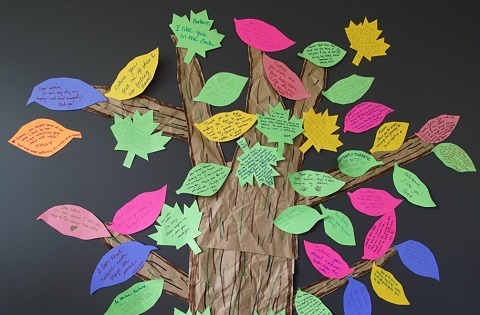
David Suzuki Foundation staff wrote letters to nature.
We're partnering with the Love Lettering Project during our annual May 30×30 Nature Challenge. (Even though nature takes mail all year round...)
Reflect on what you love most about nature.
I told nature I think it makes the best babysitter, picks me up when I get down, smells better than the city and looks great in the dark.
Express your passion in a love letter:
Hide it for someone to find -- around the house, at your local library, community centre or school. Write #lovenature or #30×30NatureChallenge on the envelope so others can play along.
Enlist your kids or pitch the idea to your daycare or school. Think of all the child art you're currently hoarding and how it might benefit others in your community!
Do it at work, covertly. Hide your letter inside the office or outside if you have a courtyard or garden. Or invite colleagues to participate -- provide markers and paper, then showcase the letters for everyone to enjoy.
Share your love letter on Facebook, Twitter or Instagram using #lovenature and you'll be entered to win a prize package from Genuine Health.
Write your love letter during the month of May while you're doing our 30×30 Nature Challenge! We're selecting a winning letter each week.
What do you love about nature?
Sincerely,
Lindsay Coulter, a fellow Queen of Green
Hey! Want more DSF? Join David Suzuki on Facebook

Divest from damage and invest in a healthier future

(Credit: Chris Yakimov via Flickr)
If people keep rapidly extracting and burning fossil fuels, there’s no hope of meeting the 2015 Paris Agreement climate change commitments. To ensure a healthy, hopeful future for humanity, governments must stick to their pledge to limit global warming to 1.5 or 2 C above pre-industrial levels by 2050. Many experts agree that to meet that goal, up to 80 per cent of oil, coal and gas reserves must stay in the ground. That makes fossil fuels a bad investment — what analysts call “stranded assets”.
Putting money toward things that benefit humanity, whether investing in clean energy portfolios or implementing energy-saving measures in your home or business, is better for the planet and the bottom line than sinking it into outdated industries that endanger humanity.
Because we still live in a fossil-fuelled world, avoiding investments in dirty fuels and infrastructure is difficult. For individuals who use mutual funds, finding viable plans with no fossil fuel holdings is challenging, but not impossible, especially as demand increases. But while individual investment choices coupled with growing demand for fossil-fuel-free options make a difference, the real momentum is in institutional investments. Even there, public pressure and campaigns have a huge impact.
Many banks and investment advisers are warning clients about the dangers of fossil-fuel-related portfolios, noting that climate agreements, government regulations, reduced demand and market volatility make them risky. Some, such as HSBC, suggest divestment as one route, but note some investors may just want to pull their money from the riskiest sectors, such as coal and oil, or keep investments so they can influence company decisions.
McGill University’s board of governors touted the latter as one reason for rejecting a widespread call to withdraw about $70 million in fossil fuel money from its $1.3-billion endowment fund. But the university appears blind to the problem. In a report to the board, the McGill Committee to Advise on Matters of Social Responsibility wrote, “The Committee is persuaded that the beneficial impact of fossil fuel companies offsets or outweighs injurious impact at this time.” In response, many McGill alumni, including David Suzuki Foundation Quebec and Atlantic Canada director-general Karel Mayrand, returned their degrees.
The inability of students, faculty, staff and the public to convince boards at McGill, the University of British Columbia, Concordia University, Dalhousie University and the University of Calgary to divest shows how entrenched the fossil fuel industry is when it comes to large investors. But it also shows that individuals play a major role in getting institutional money out of the industry. Although these campaigns haven’t convince those boards to divest — yet — they’ve raised awareness about fossil fuel investments.
The divestment campaign has also won numerous successes. A growing number of universities, banks, pension funds, unions, churches, cities, insurance companies, individuals and even the U.K.’s Guardian newspaper have pulled funds — which makes fossil fuel investments even shakier. The David Suzuki Foundation works with Genus Capital to ensure that none of its endowment fund is invested in fossil fuel-related funds, and to develop strategies for ethical investing — which hasn’t harmed returns. In fact, Genus reports, “fossil fuel free investing is proving more profitable than conventional investing.”
According to 350.org, the major force behind the divestment movement, “more than 500 institutions representing over $3.4 trillion in assets have made some form of divestment commitment” as of late 2015.
Divesting is just the start. As 350.org notes, reinvesting in “renewable energy, energy efficiency, and climate mitigation and adaptation infrastructure” not only helps the world shift away from fossil fuels, but is also financially wise. One option besides stock portfolios is to reinvest in initiatives that help the climate and the bottom line, such as making buildings more energy efficient. According to the Guardian, “One conservative report calculated that investing $400,000 on efficiency in a 100,000 square-foot building would deliver $1.50 per square foot in reduced energy costs over a similar building without the efficiency” — for an annual saving of $150,000!
Wastefully exploiting and burning fossil fuels is outdated. There’s no reason to put money into industries that destroy the natural systems that make human life possible. But there are many reasons to stop giving them money. It’s time to invest in a healthier future.
Hey! Want more DSF? Join David Suzuki on Facebook

David Suzuki's Blog
- David Suzuki's profile
- 247 followers



